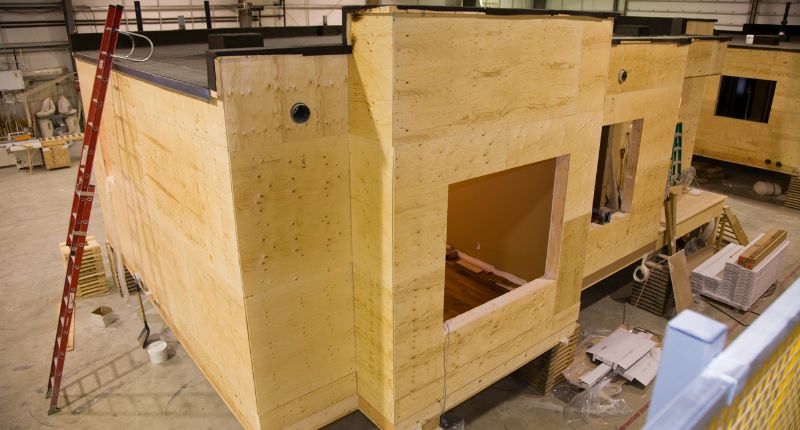
- NSW government tackles housing crisis with cross-government task force.
- Government seeking to expand upon the successful use of modular housing.
- NSW task force focuses on MMC innovation, speed, quality, and sustainability.
Yesterday, a new cross-government task force met for the first time to discuss modular housing with the New South Wales (NSW) government to provide urgently required social housing for its residents.
Modular housing has been trialled with great success in NSW and other parts of Australia. Some see it as critical in alleviating the supply-side issues exacerbating Australia’s housing crisis, providing timely and cost-effective housing for those who desperately need it.
Earlier this year, the Western Australian government announced over 200 modular homes were being built as part of the State’s $2.4 billion pledge to combat homelessness.
Last year, the Victorian government revealed a $30.38 million plan to build 114 energy-efficient prefabricated modular homes for people who were homeless or at risk of being homeless.
It is predicted that modular housing will become even cheaper to build as it gains popularity upon scaling up and attaining efficiencies of scale in manufacturing.
New solutions for housing dilema
As part of the NSW Government’s commitment to protecting residents who have been facing housing insecurity, an initial investment of $10 million has been earmarked from the $224 million Essential Housing Package to improve the state’s social housing supply through trialling innovative solutions.
“We need to deliver more and better homes for people in need that are fit for purpose, in line with current demand needs and in the right location,” said NSW Minister for Housing and Homelessness, Rose Jackson.
“Addressing the state’s housing crisis is our top priority, and we need to explore new ways to boost housing as quickly as possible and I’m confident that modular housing will be a vital tool to achieve this.”
Rose Jackson, NSW Minister for Housing and Homelessness.
“This task force aims to foster innovation and partnerships across government, industry, and community housing providers (CHPs) to leverage expertise across the sector and explore new and moder methods of construction (MMC) to deliver new homes.
“Collaboration across government and the MMC sector is crucial to further develop the housing sector, boost economic growth, and create more jobs in NSW.”
Reviewing MMCs to deliver social housing
The task force comprised of peak body representatives like PreFab Aus, Shelter NSW, Community Housing Industry Association Local Government NSW, Property Council of Australia, government architects, industry suppliers and union representatives, along with individuals who had experience living in social housing.
Areas of focus for the task force include:
- Investigating innovative MMC, including modular housing.
- Advising on how MMC could produce homes quicker.
- Studying the highest standard designs as dictated by the NSW Land and Housing Corporation’s (LAHC) best-practice guidelines.
- Exploring several innovative, top-quality, durable and sustainable modern construction products.
The task force will work with local councils to find sites for the modular houses. While exact locations have not been determined, several local councils have expressed interest in joining the project.
Modular housing is particularly suited to regional areas, which already have planning regulations in place.
Another potential avenue for constructing modular housing is surplus public land, which may be rezoned for housing.
The advisory task force will be operational for up to two years, overseen by Homes NSW as part of its mission to deliver homes for people who need them.
Speed must not come at the expense of quality
Though praising the State Government’s dedication to addressing homelessness, Homelessness NSW reiterated that modular homes must be built to high standards, accessible, safe, and located near transport and services to address homelessness adequately.
“We support efficient building approaches, but this speed must not come at the expense of quality, safety, accessibility, and high environmental standards,” said Homelessness NSW CEO, Dom Rowe.
“The government must also be very careful about where these homes are placed. The last thing we want is to create another layer of disadvantage for people in crisis by putting these homes in the middle of nowhere.
“They must be near transport and services and integrated into existing communities.
“With the scale of the housing and homelessness crisis in our state, we need large-scale, long-term investment in social housing and proper funding for under-resourced homelessness services if we’re going to create meaningful pathways out of homelessness.”







